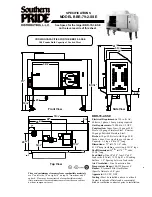
Professional Collection Manual
16
12C. NFPA 70: Standard for Electrical Safety in the Workplace®
Scope:
This standard addresses electrical safety-related work practices, safety-related
maintenance requirements, and other administrative controls for employee
workplaces that are necessary for the practical safeguarding of employees relative
to the hazards associated with electrical energy during activities such as
the installation, inspection, operation, maintenance, and demolition of electric
conductors, electric equipment, signaling and communications conductors and
equipment, and raceways. This standard also includes safe work practices for
employees performing other work activities that can expose them to electrical
hazards as well as safe work practices for the following:
(1) Installation of conductors and equipment that connect to the supply of
electricity
(2) Installations used by the electric utility, such as office buildings,
warehouses, garages, machine shops, and recreational buildings that are not an
integral part of a generating plant, substation, or control center.
Informational Note:
This standard addresses safety of workers whose job responsibilities entail
interaction with electrical equipment and systems with potential exposure to
energized electrical equipment and circuit parts. Concepts in this standard
are often adapted to other workers whose exposure to electrical hazards is
unintentional or not recognized as part of their job responsibilities. The highest
risk for injury from electrical hazards for other workers involve unintentional
contact with overhead power lines and electric shock from machines, tools, and
appliances.
12D. CSA C22.1: Canadian Electrical Code - Part I Safety Standard for Electrical
Installations
This Code applies to all electrical work and electrical equipment operating or intended
to operate at all voltages in electrical installations for buildings, structures, and premises,
including factory-built relocatable and non-relocatable structures, and self-propelled
marine vessels stationary for periods exceeding five months and connected to a shore
supply of electricity continuously or from time to time, with the following exceptions:







































